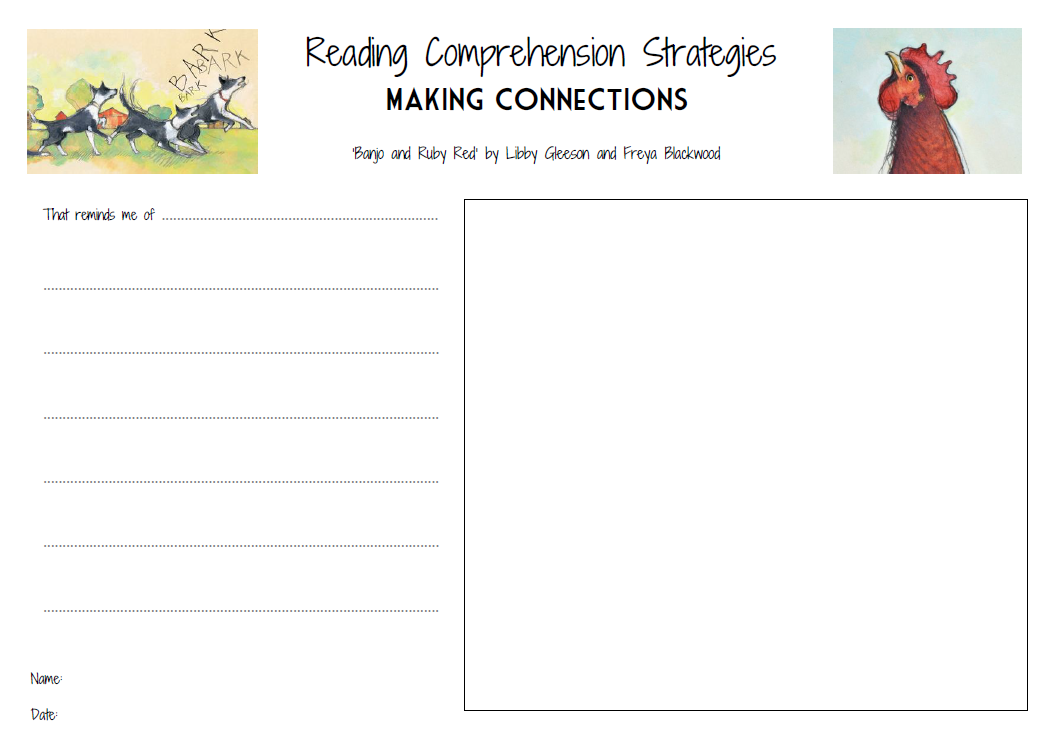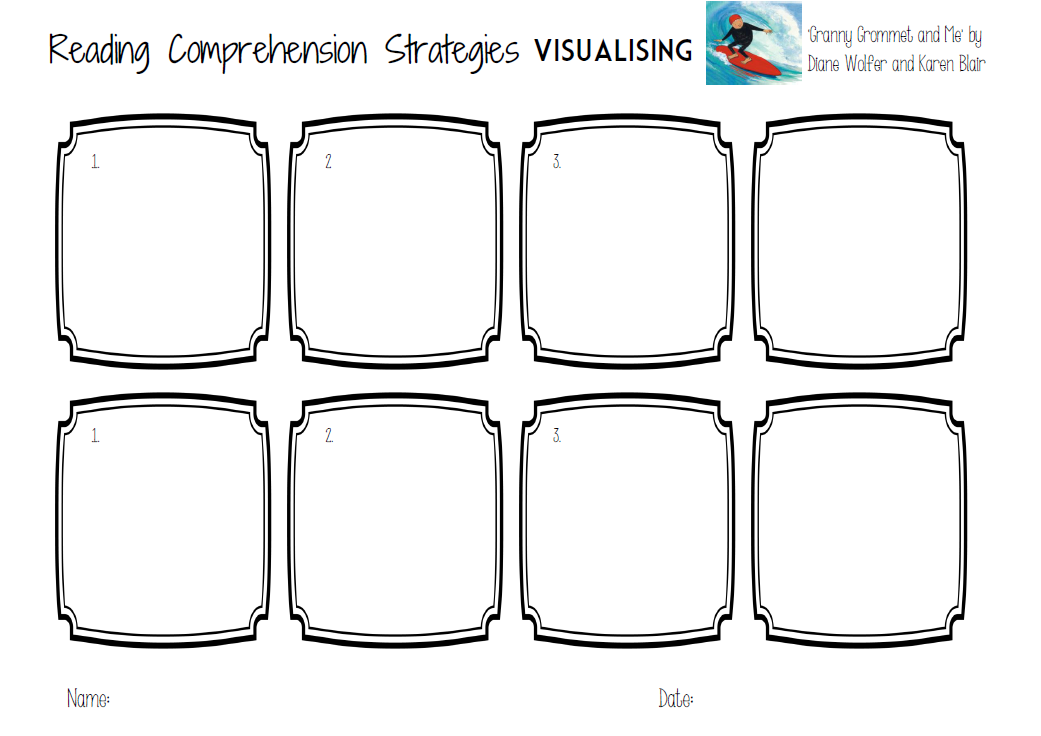Each year they pick a theme and schools, good book shops and libraries around Australia spend these next few weeks sharing the books, engaging young readers in the theme with activities in class or through parades, reading times or competitions.
Book Week is simply an invitation to spend a week celebrating books.
In my life as a contract teacher, I find myself fortunate to be working in a library at a local school this term - living the dream! As part of my current role, I get to work with children from Reception (their first year at school) through to Year 3's and for the first part of this term, we're using the Early Childhood books from the CBCA's list along with the theme of 'Connect to Reading' to teach reading comprehension strategies. I wrote about reading comprehension strategies last year. You can see those posts - here, here and here.
To me, for this age group, reading comprehension strategies are the things that children already do. I'm simply highlighting these and their importance in reading.
(This post includes some affiliate links - please visit my 'About Me' page to read the full disclosure policy)
Last week, we started by looking at making connections using the book Banjo and Ruby Red
To start the lesson, I used this image of the cover on the interactive whiteboard and just spotlighted part of Ruby Red so that was all the children could see.
I then asked them to guess what it was and this is where they start making connections to things they've seen, things they're read, things they've done. Some thought it was a dinosaur, a dragon, a fire and lots thought it was a hen because they recognised the comb. I then revealed the whole cover for them to see and told them the title of the story was 'Banjo and Ruby Red'. 'Who do we think is Ruby Red?' I asked.
'The hen because it's red!'
'So who must Banjo be?'
'The dog!'
'Where would I see a dog and a hen together like this?'
'Maybe a farm.'
I open the inside cover to reveal the setting of the story - a farm.
'What else can you see that you'd expect to see on a farm?'
And the questions keep coming... all the while, the children are making connections.
'Whose been to a farm? What animals did you see?'
'Do we think Banjo and Ruby Red are friends?'
'What is Banjo doing now?' (Leaping in the air)
'What are all these? (Feathers floating in the air) Do you still think Banjo and Ruby Red are friends?'
'What sort of animals live on this farm if there are wool bales?'
After reading the book, the children then finished the sentence 'That reminds me of...' I prepared two different sheets - one for younger children and one for older allowing more writing space.
This week we moved on to another reading comprehension strategy - activating prior knowledge using I'm a Dirty Dinosaur. 
After explaining what the strategy - activating prior knowledge meant (switching on information they already have), I asked students to tell me what picture they saw in their heads when I said the word circus. Lots of hands go up and we shared a few ideas. Then I ask them to do the same but use a new word - zoo. Even more hands shoot up in the air - they have begun to see what this strategy looks like. I then give them the final word - dinosaur. Now with these pictures fresh in their mind, I ask the younger students to draw what they know about dinosaurs.
For the more capable writers, I had prepared a before and after web from the Sheena Cameron book. They begin by adding words about dinosaurs to the boxes immediately around the centre. I have a pile of different dinosaurs books available for them to then do some research. They can then add some new terms to the outer frame to complete their web.
Two of my children's favourite wordless books are Sunshine and Moonlight
and Moonlight by Jan Ormerod so I wasn't surprised by how much they enjoyed The Swap
by Jan Ormerod so I wasn't surprised by how much they enjoyed The Swap . This week I'll be using this text to look at the comprehension strategy of predicting.
. This week I'll be using this text to look at the comprehension strategy of predicting.
I've used this template several times now with different books and expect it to work just as well with 'The Swap' which is a story of a jealous big sister who thinks she can swap her new little brother as easily as her mum can swap a hat she doesn't like. She tries a few other baby animals but finds them not very agreeable either. 'The Swap' is a great book for working with adjectives too.
To start, children will complete the first box on the sheet using just the cover of the book to predict what the story is about. Once they've completed that, you begin reading the book but stop part way through. I would suggest when she goes into the baby shop to swap her brother as a good spot to stop for older children or maybe part way through the swap for younger children once they have the idea that one animal is being swapped for another then they could simply predict what baby animal might be next. Julia Donaldson's Stick Man is perfect for this strategy too. I pause when he floats out to sea and have them predict what happens next.
is perfect for this strategy too. I pause when he floats out to sea and have them predict what happens next.
The following week we're going to be looking more formally at visualising using the book 'Granny Grommet and Me'. They have already been practicing this comprehension strategy throughout our focus on reading comprehension strategies and who can't feel the sand between your toes and hear the waves crashing when you start talking about the beach.
To teach this strategy, I'm using some picture clues I picked up at a professional development day a couple of years ago. Unfortunately, I still don't know their source so am unable to share them here. Here are a couple of the prompts used in another class.
I've also got to do the main wall display in the library this past week ahead of Book Week. I went with book covers as jigsaw pieces but see if you can make the connections...
How is your school or children celebrating Book Week this year?














